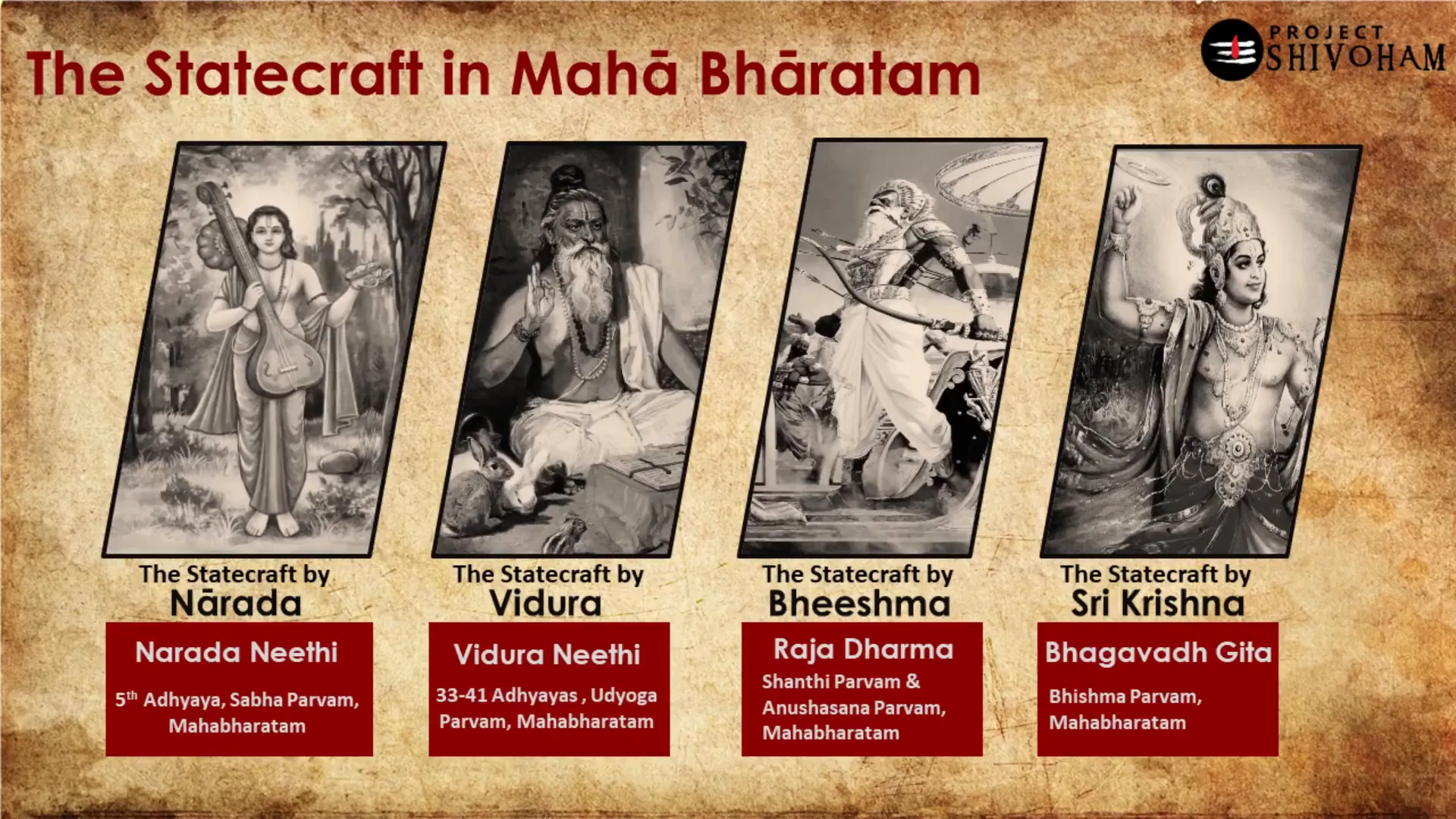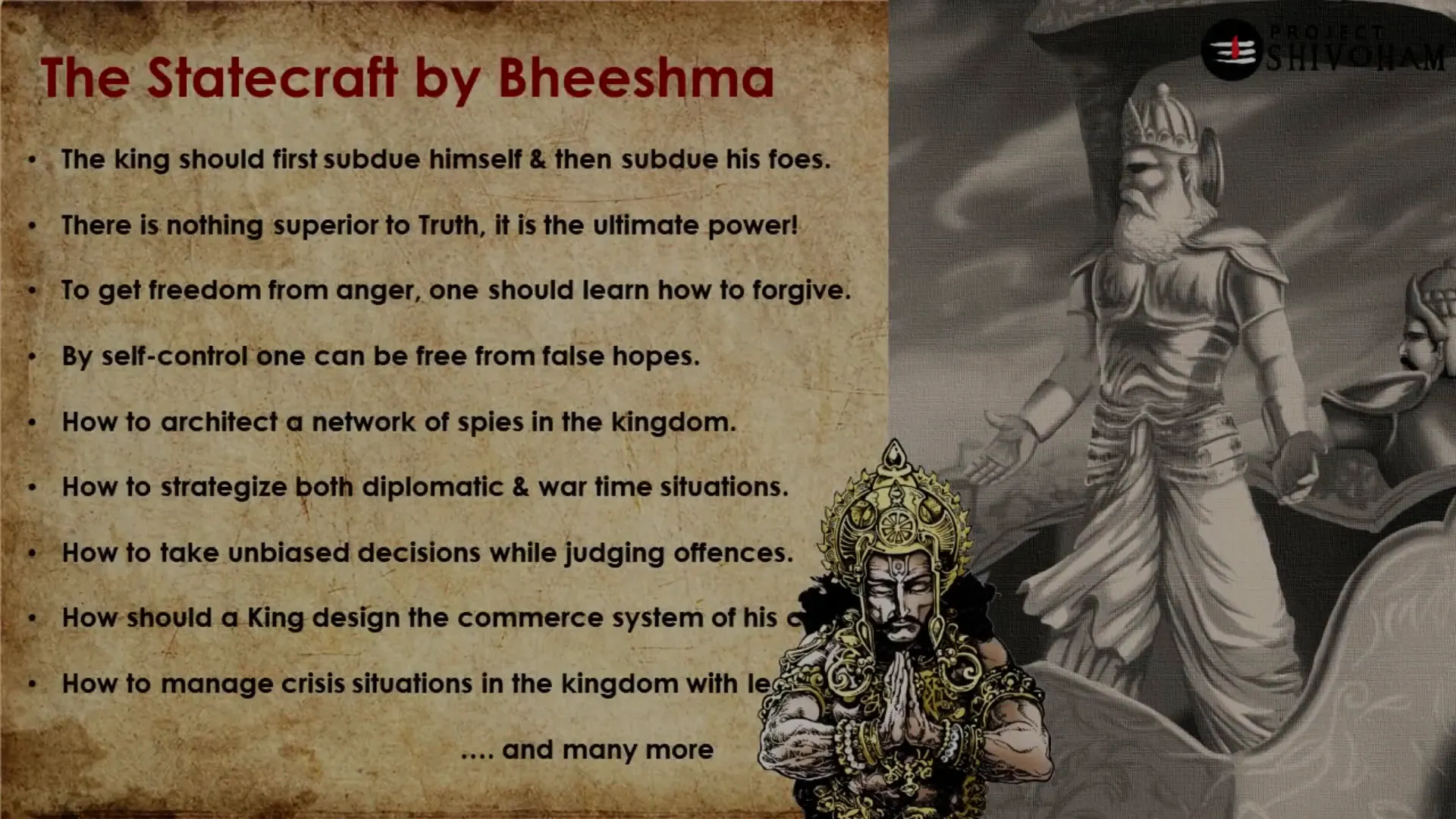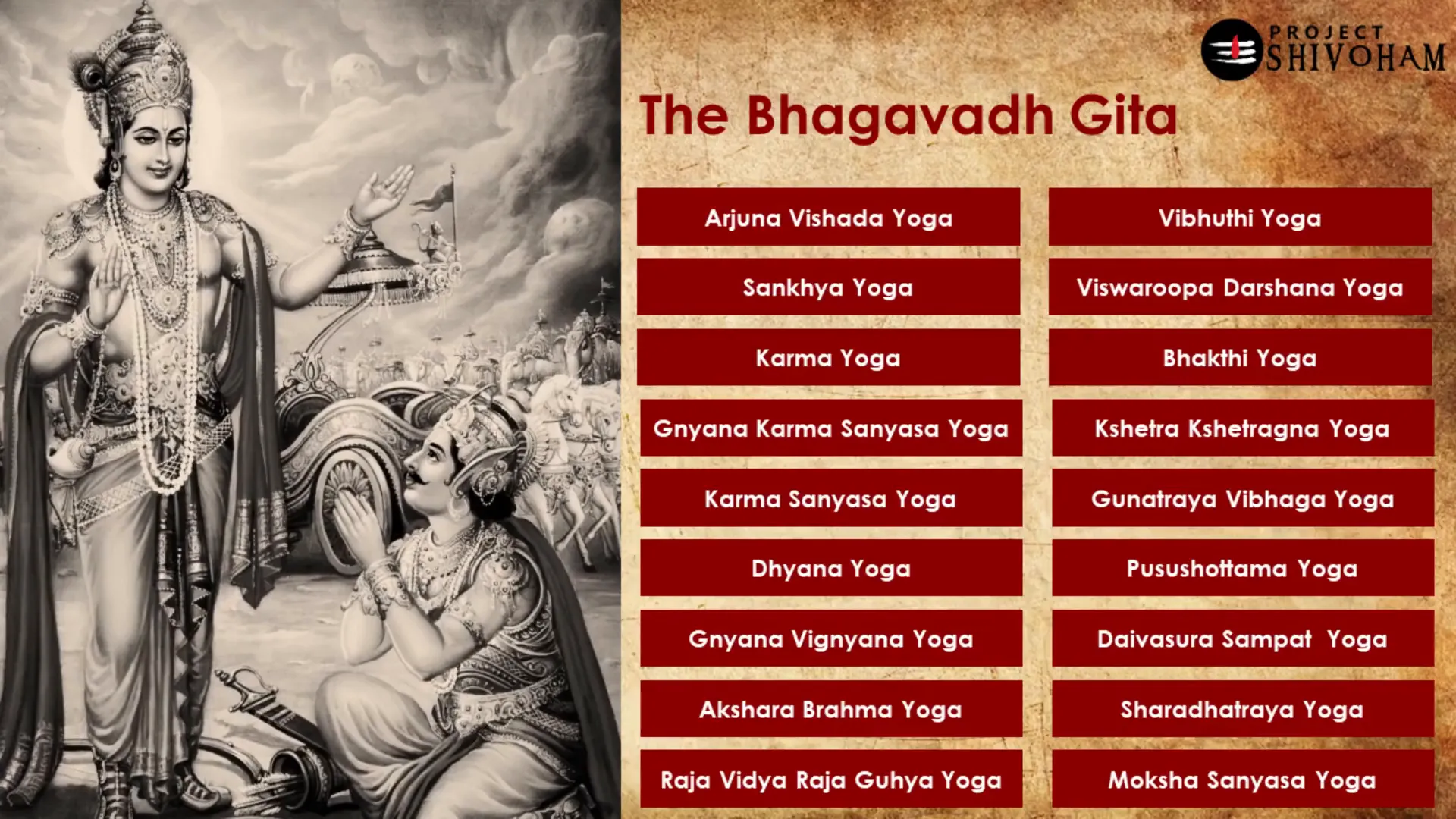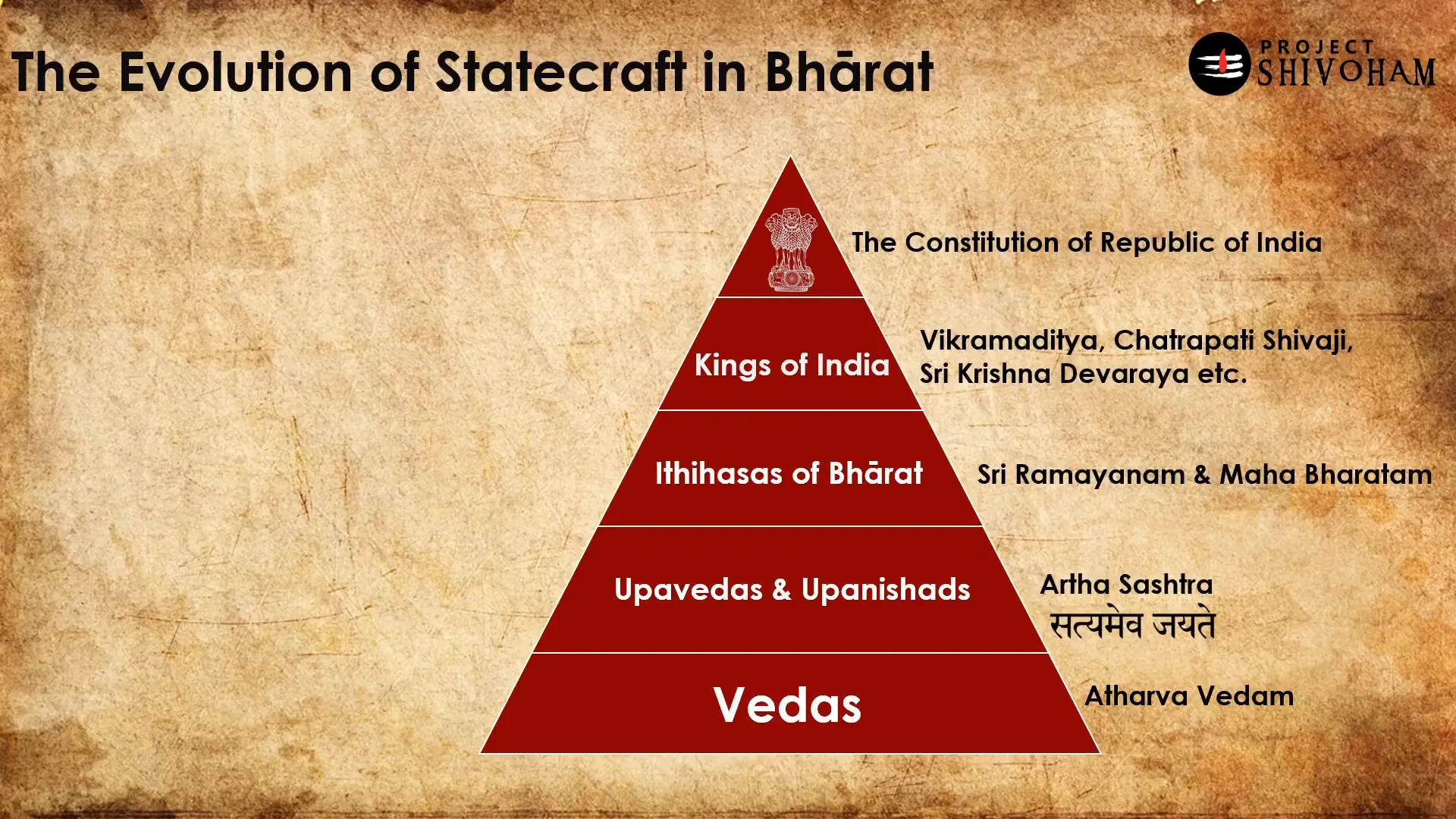Welcome to an exploration of the profound insights into statecraft as depicted in the Mahabharata, one of the world’s largest epics. This article marks a significant milestone in our initiative, Project Shivohum, which aims to bring forth the rich, often forgotten heritage of Bharat. With over one hundred thousand subscribers and tens of thousands of viewers, we are grateful for your unwavering support. To further connect with you, we have launched our Twitter and Instagram handles, links to which can be found in the description.
This article is dedicated to understanding the relevance of the Mahabharata in today’s context, particularly focusing on its teachings about statecraft. If you are between the ages of thirteen to twenty-five and aspiring to enter the field of public administration, this piece is for you. Let’s dive deep into the intricacies of statecraft as articulated in this epic narrative.
Table of Contents
- The Relevance of Mahabharata Today
- Understanding Statecraft
- Narada Maharishi: The First Guru of Statecraft
- Vidura: The Philosopher’s Wisdom
- Bhishmacharya: The Grand Old Man of Mahabharata
- Bhagavan Sri Krishna: The Master of Statecraft
- Conclusion: The Roots of Statecraft in Bharat
- FAQs
The Relevance of Mahabharata Today
Many of us have encountered the Mahabharata through various mediums—be it the Bhagavad Gita, which is an integral part of the epic, or through popular television serials aired on Doordarshan. However, we must ask ourselves: is this all there is to the Mahabharata? Is it relevant for our age today? The answer is a resounding yes. The Mahabharata offers timeless wisdom that is applicable to contemporary governance and ethical leadership.
To illustrate this, consider the metaphor of a tree. Its fruits and roots are deeply connected, deriving from a single seed. Similarly, the culture, language, and heritage of a nation are interconnected over time. The concept of Satyameva Jayate, which translates to “truth alone triumphs,” serves as the fruit of our national constitution, while its roots are embedded in the ancient wisdom found in texts like the Mahabharata.
Understanding Statecraft
Statecraft, a crucial subject in the humanities, encompasses the duties of a king or government and the responsibilities of the citizenry. It involves various facets, including public policy making, public welfare, administration, and law enforcement. Today, the Constitution of India serves as the highest authority guiding statecraft. However, how was statecraft practiced thousands of years ago during the era of the Mahabharata? Understanding this provides us with valuable insights into the roots of our current values.
In our analysis of the Mahabharata, we identify four prominent figures who elucidated statecraft:
- Narada Maharishi – He imparted lessons to Yudhishthira.
- Vidura – He shared wisdom with Dhritarashtra.
- Bhishmacharya – He taught Yudhishthira the ways of governance.
- Bhagavan Sri Krishna – He exemplified statecraft throughout the epic.
Narada Maharishi: The First Guru of Statecraft
Narada Maharishi is often misrepresented in popular culture as a humorous character. However, his true essence is that of a wise sage well-versed in the Vedas, Upanishads, and various philosophical texts. One of his significant contributions was providing Valmiki with the initial hundred verses that formed the basis of the Ramayana.
In the Sabha Parva of the Mahabharata, Narada Maharishi visits Yudhishthira and imparts essential lessons on governance that span hundreds of slokas. Here are some key teachings:
- How to judiciously allocate resources as a king.
- The importance of ethics and morals over wealth.
- Six vital qualities a king should cultivate.
- Understanding the strengths and weaknesses of the kingdom.
- Assessing enemies on fourteen different grounds.
- Ensuring security for the citizens across various facets of life.
- Selecting trustworthy ministers for critical positions.
- Maintaining a seamless cycle of commerce in the kingdom.
- Recognizing fourteen undesirable qualities to avoid in leadership.
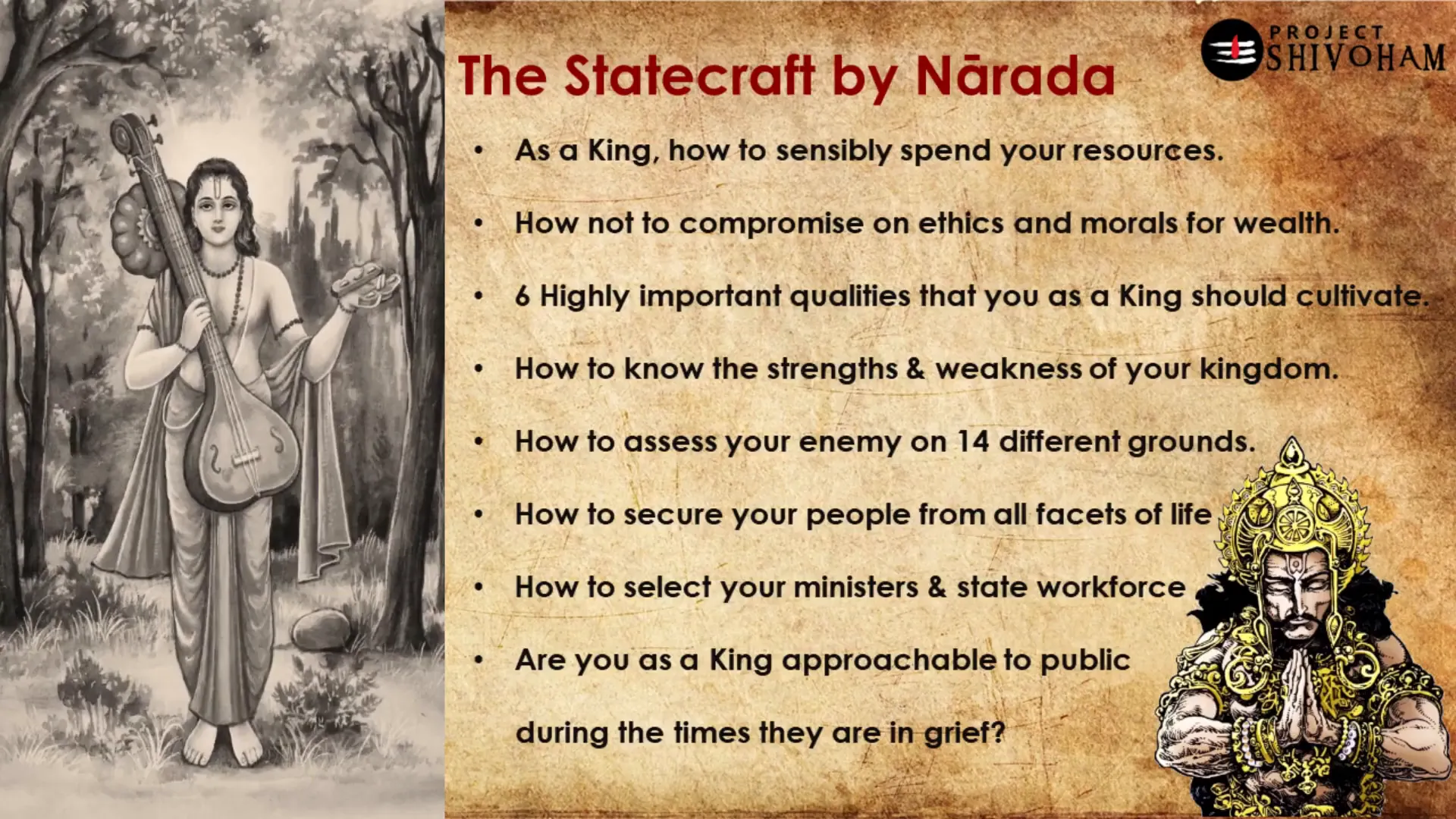
Vidura: The Philosopher’s Wisdom
Next, we turn to Vidura, the son of Vedavyasa and half-brother to Pandu and Dhritarashtra. Vidura is renowned for his intellect and philosophical insights. His dialogues with Dhritarashtra are critical to understanding the moral fabric of the Mahabharata.
These conversations culminate in what is known as Vidura Niti, which outlines the qualities of a wise ruler. Some of the key lessons include:
- The distinction between wise and foolish individuals.
- The importance of intellect for effective governance.
- Consequences of poor public policies on a kingdom.
- Identifying untrustworthy individuals and traitors.
- Eight undesirable traits of a king.
- Tests to reveal true character.
- Diplomacy with enemies and winning over subordinates.
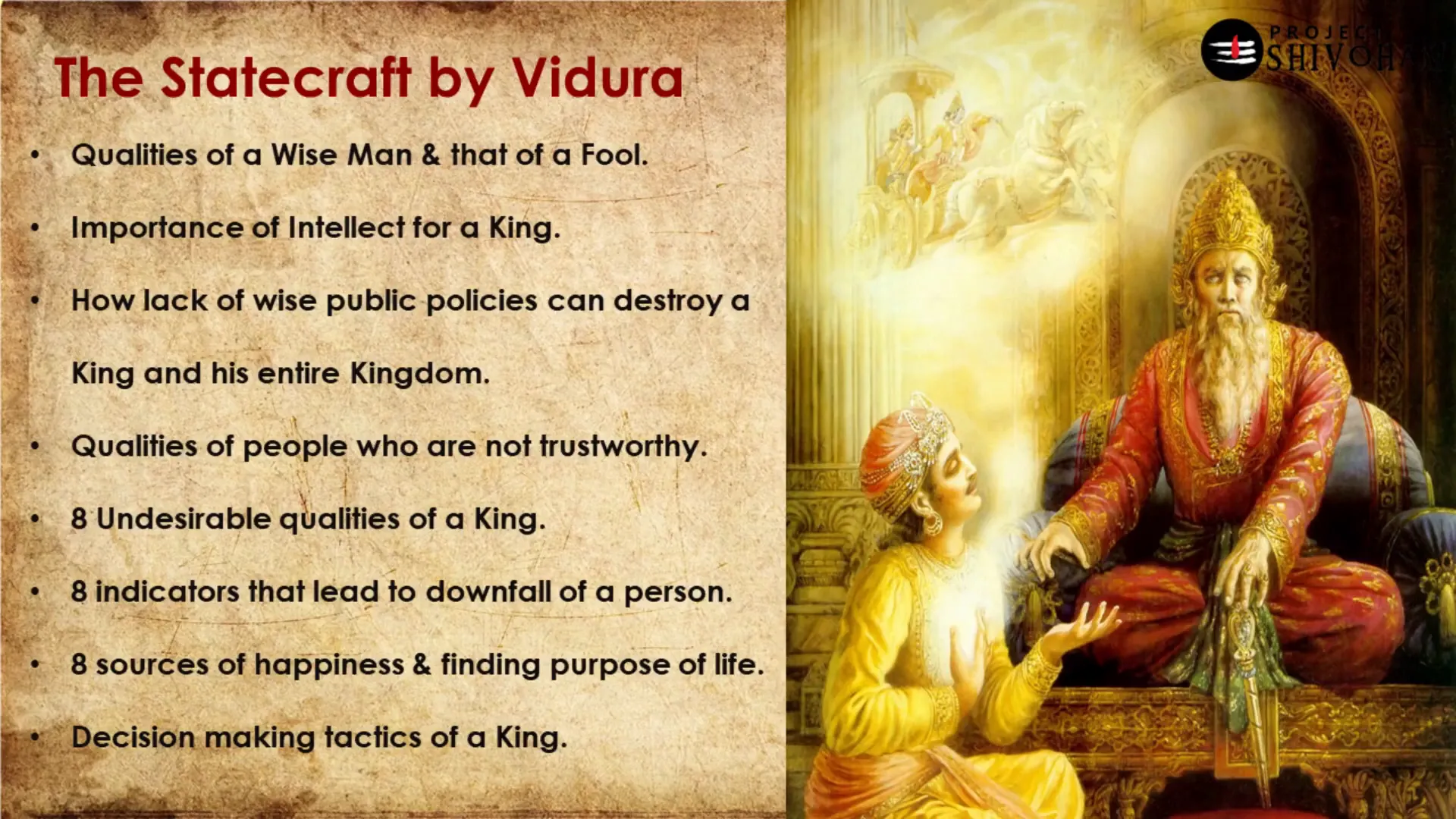
Bhishmacharya: The Grand Old Man of Mahabharata
Bhishmacharya is a pivotal figure in the Mahabharata, often regarded as the kingmaker. He is the son of King Shantanu and the river goddess Ganga. His wisdom and valor are unmatched, and he plays a crucial role during the Kurukshetra war.
On his deathbed, Bhishmacharya imparts critical lessons on statecraft to Yudhishthira, which form the foundation for Chanakya’s Artha Shastra. His teachings are encapsulated in two significant chapters:
- Shanti Parva – Discusses the qualities and duties of a king.
- Anushasana Parva – Focuses on the king’s responsibilities toward society.
Some of the lessons from Bhishmacharya include:
- A king must first conquer himself before leading others.
- Truth is the ultimate power.
- Forgiveness is essential for overcoming anger.
- Strategies for managing crises and designing commerce systems.
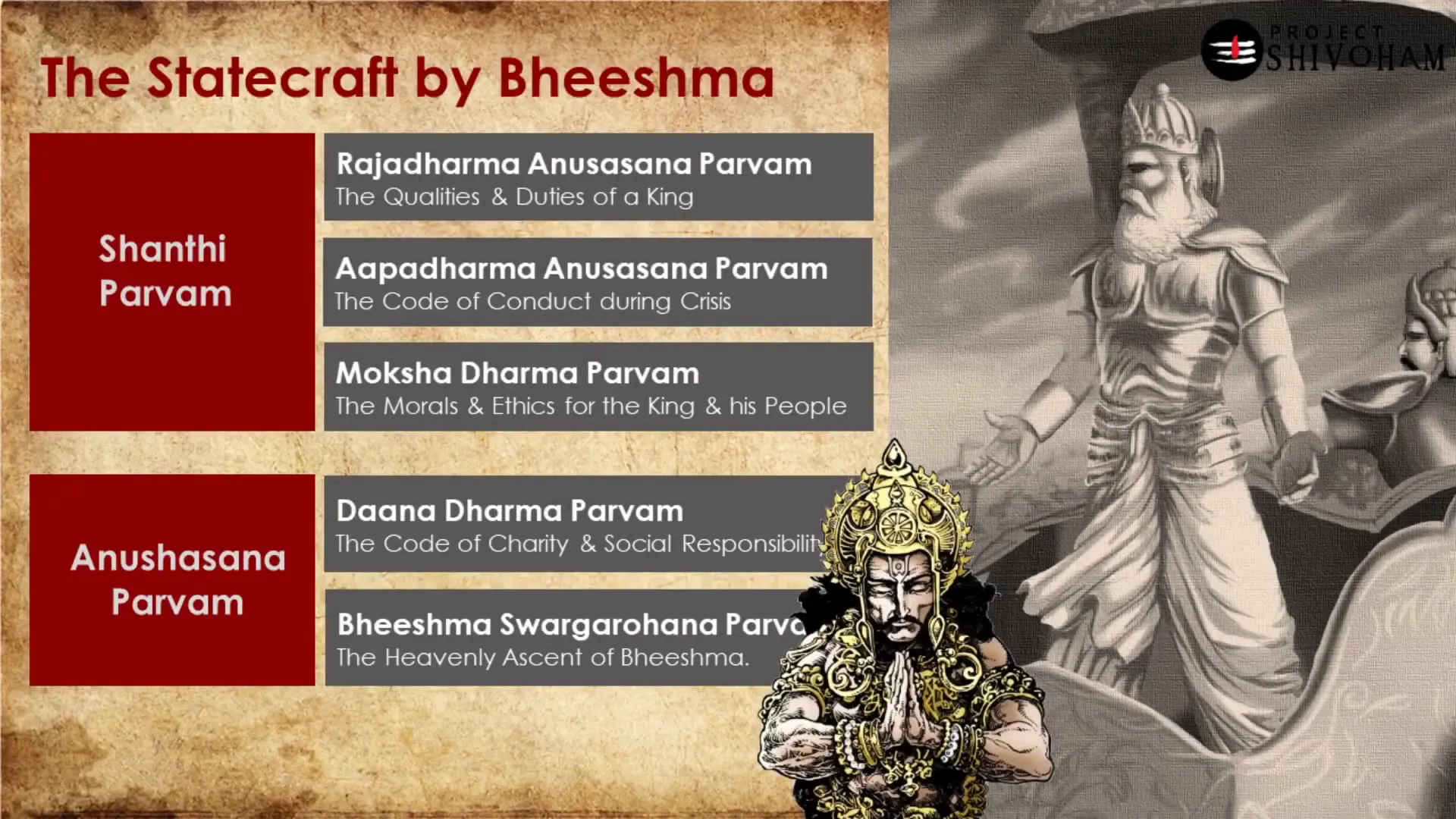
Bhagavan Sri Krishna: The Master of Statecraft
Finally, we arrive at Bhagavan Sri Krishna, the incarnation of Lord Vishnu. His role in the Mahabharata is not merely as a divine figure but as a practical exemplar of statecraft. Krishna embodies the principles of dharma through his actions and decisions during the war.
One notable moment occurs when Bhishmacharya, lying on his deathbed, is asked by Krishna to impart statecraft to Yudhishthira. Bhishmacharya questions Krishna’s request, stating that as the creator of dharma, Krishna is more qualified to teach it. Krishna’s response is profound:
“It is more powerful when dharma is taught by one who practices it than by the creator.”
This highlights a crucial understanding: knowledge is futile unless applied in practice. For instance, while everyone knows that corruption is wrong, it persists in society. Krishna emphasizes that true understanding comes from application.
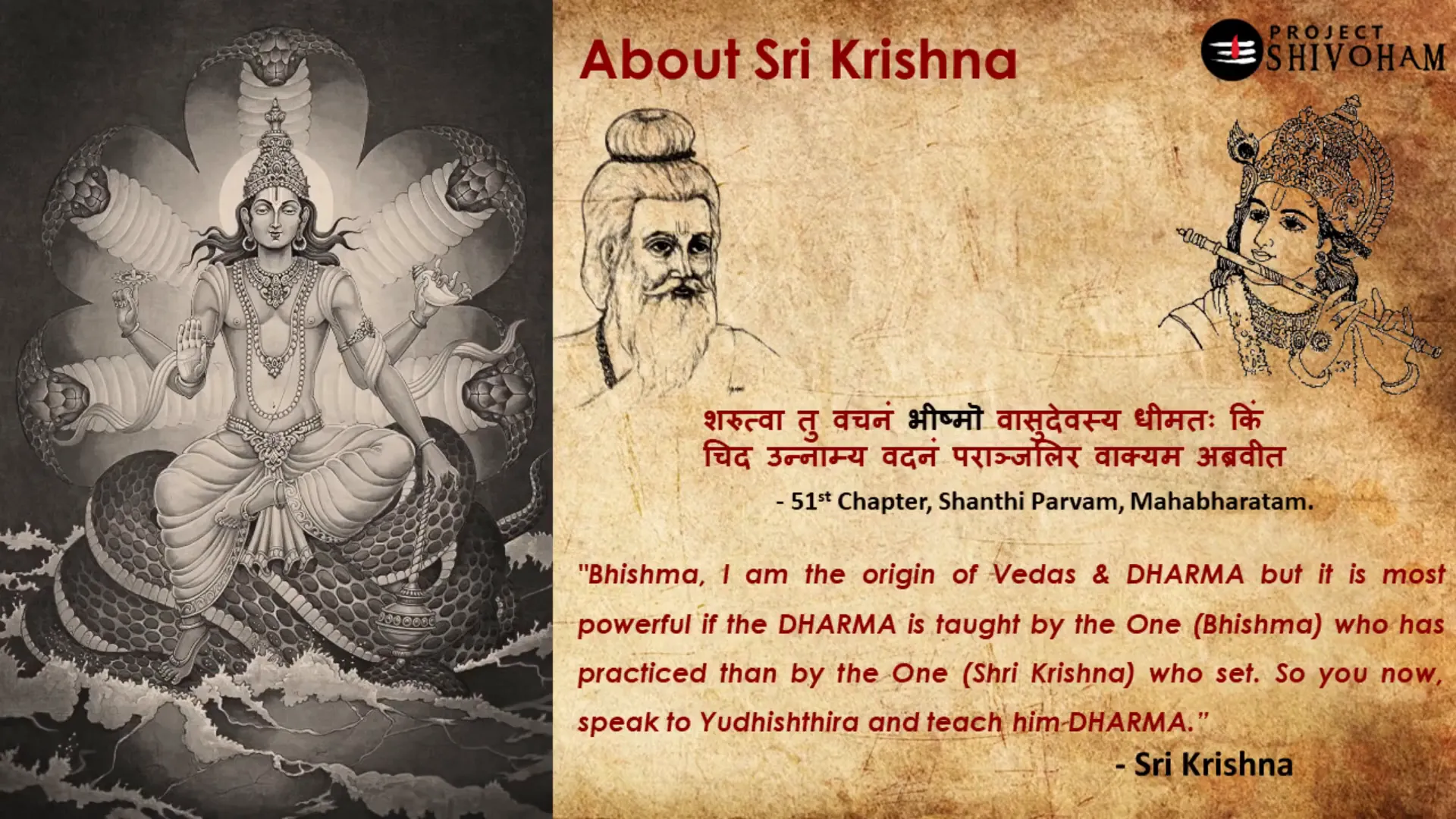
Conclusion: The Roots of Statecraft in Bharat
As we reflect on the teachings of the Mahabharata, it becomes clear that the insights provided by Narada Maharishi, Vidura, Bhishmacharya, and Bhagavan Sri Krishna are not just historical lessons but timeless principles that can guide us in contemporary governance. The synthesis of these teachings forms the bedrock of statecraft in Bharat, which has evolved over thousands of years.
For the younger generation, particularly those aspiring to enter public administration, it is vital to grasp the roots of statecraft in India. The Constitution of India, our highest legal authority, stands above all religious laws and serves as a testament to our commitment to ethics, values, and morals.
In closing, let us ponder upon the guiding principles of our nation:
- Why do we believe in Vasudhaiva Kutumbakam (the world is one family)?
- Why do we uphold Satyameva Jayate?
- Why do we adhere to Dharmu Rakshati Rakshitha?
These questions compel us to set aside our political and religious affiliations and focus on the truth that binds us as a nation. Understanding the evolution of statecraft in Bharat is essential for anyone looking to contribute meaningfully to society.
Thank you for joining us on this journey through the Mahabharata. We hope this article inspires you to explore further and engage with the rich heritage of Bharat.
Jai Hind!
FAQs
1. What is the significance of the Mahabharata in modern governance?
The Mahabharata offers timeless wisdom on ethics, leadership, and statecraft that is applicable in contemporary governance.
2. Who are the main figures that impart lessons on statecraft in the Mahabharata?
The key figures include Narada Maharishi, Vidura, Bhishmacharya, and Bhagavan Sri Krishna.
3. How can the teachings of the Mahabharata be applied today?
These teachings can guide current leaders in ethical decision-making, public policy, and governance.
4. What does Satyameva Jayate signify?
Satyameva Jayate translates to “truth alone triumphs” and emphasizes the importance of truth in governance and life.
5. Why is self-control important for a leader?
Self-control allows a leader to make unbiased decisions, maintain composure during crises, and uphold the values of their position.
This article was created from the video The Statecraft in MAHABHARAT. Project SHIVOHAM with the help of AI. Thanks to Aravind Markandeya, Project Shivoham.
